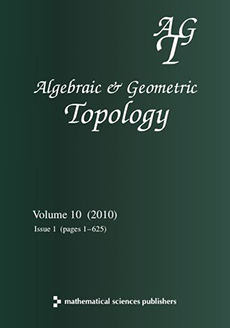Abstract
The unknotting number of a knot is the minimum number of crossings one must change to turn that knot into the unknot. We work with a generalization of the unknotting number due to Mathieu–Domergue, which we call the untwisting number. The –untwisting number is the minimum number (over all diagrams of a knot) of full twists on at most strands of a knot, with half of the strands oriented in each direction, necessary to transform that knot into the unknot. In previous work, we showed that the unknotting and untwisting numbers can be arbitrarily different. In this paper, we show that a common route for obstructing low unknotting number, the Montesinos trick, does not generalize to the untwisting number. However, we use a different approach to get conditions on the Heegaard Floer correction terms of the branched double cover of a knot with untwisting number one. This allows us to obstruct several – and –crossing knots from being unknotted by a single positive or negative twist. We also use the Ozsváth–Szabó invariant and the Rasmussen invariant to differentiate between the – and –untwisting numbers for certain .
Citation
Kenan Ince. "Untwisting information from Heegaard Floer homology." Algebr. Geom. Topol. 17 (4) 2283 - 2306, 2017. https://doi.org/10.2140/agt.2017.17.2283
Information





